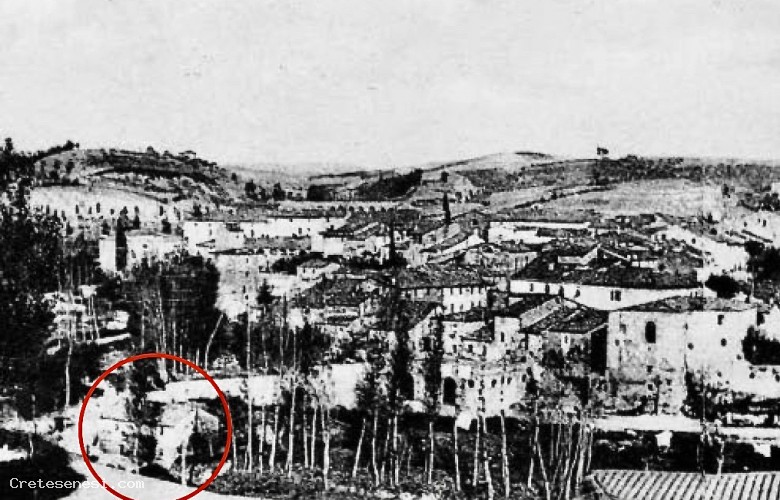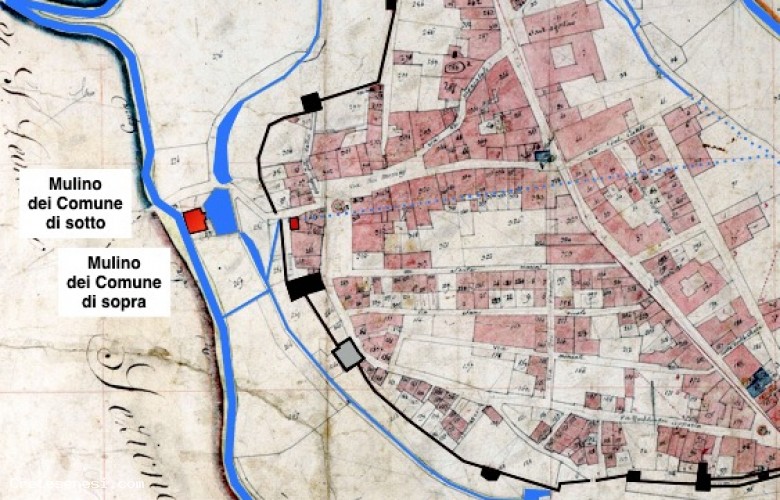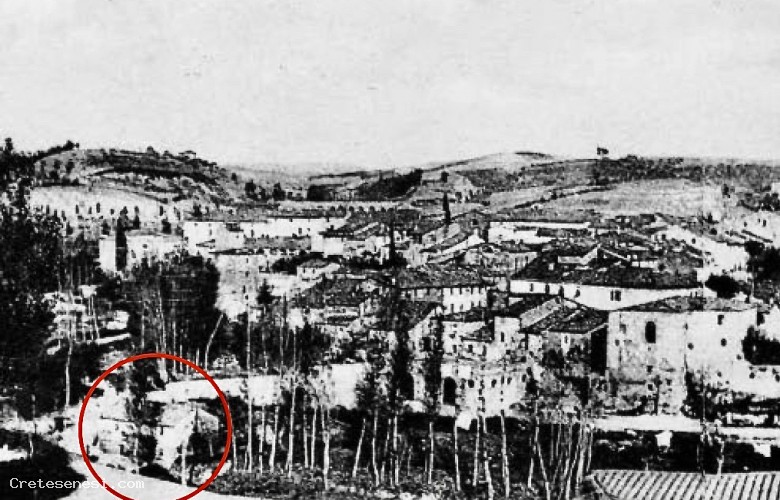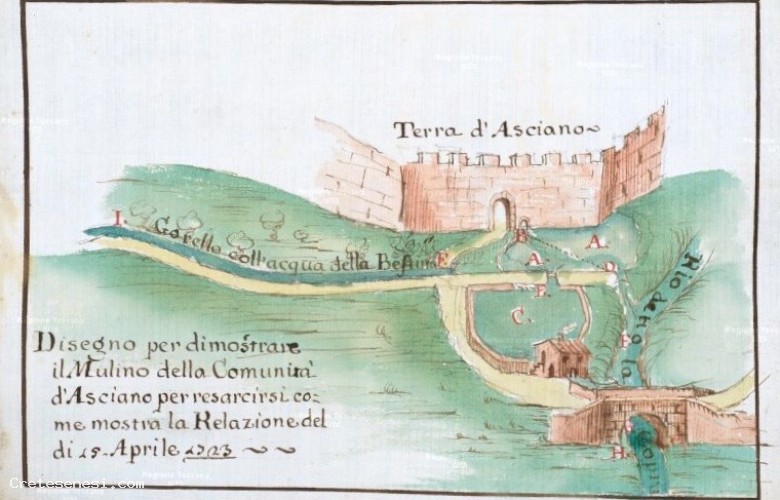Crete Senesi
M11 - Antico Mulino del Comune di sotto
ASCIANO

.jpg)



This mill, collective property of the local community, was the last in the chain of all the mills that exploited the water of the Bestina and was located on the right bank of the Copra, into which it directly poured the water used.
Despite being the last in the chain of mills, it did not have to be in difficulty due to lack of water, since it could use three different adductions and had two gores for water storage.
The first water supply came from a long canal leaning against the walls and fed by the drains of the Mills of the Launches and the Friars. The second source of supply came from the small existing spring, just outside the Porticciola and which fed the washing sources outside the walls. The third came from the drains of the Mulino del Comune di sopra, located inside the city walls.
The complicated canalization structure also included a spillway, used to discharge any excess water directly in the course of the Copra.
Part of this whole structure was modified in the second half of the nineteenth century, to build the new Sources for Washing, which prevented the two Mills of the Municipality from continuing to function.
The water of the Porticciola was used to feed the new washing sources, together with the one that fed the mill above. Later the two gore were drained and the building of the Molino di sotto demolished.
In their place, today there are: the real estate property of Giordano Maremmi and the asphalted car park, as well as a section of the ring road: via delle Fonti.
Read historical-documental references by A.R.C.A.
Click here to use the Navigator of the Mills, to know all the details.
This mill, collective property of the local community, was the last in the chain of all the mills that exploited the water of the Bestina and was located on the right bank of the Copra, into which it directly poured the water used.
Despite being the last in the chain of mills, it did not have to be in difficulty due to lack of water, since it could use three different adductions and had two gores for water storage.
The first water supply came from a long canal leaning against the walls and fed by the drains of the Mills of the Launches and the Friars. The second source of supply came from the small existing spring, just outside the Porticciola and which fed the washing sources outside the walls. The third came from the drains of the Mulino del Comune di sopra, located inside the city walls.
The complicated canalization structure also included a spillway, used to discharge any excess water directly in the course of the Copra.
Part of this whole structure was modified in the second half of the nineteenth century, to build the new Sources for Washing, which prevented the two Mills of the Municipality from continuing to function.
The water of the Porticciola was used to feed the new washing sources, together with the one that fed the mill above. Later the two gore were drained and the building of the Molino di sotto demolished.
In their place, today there are: the real estate property of Giordano Maremmi and the asphalted car park, as well as a section of the ring road: via delle Fonti.
Read historical-documental references by A.R.C.A.
Click here to use the Navigator of the Mills, to know all the details.